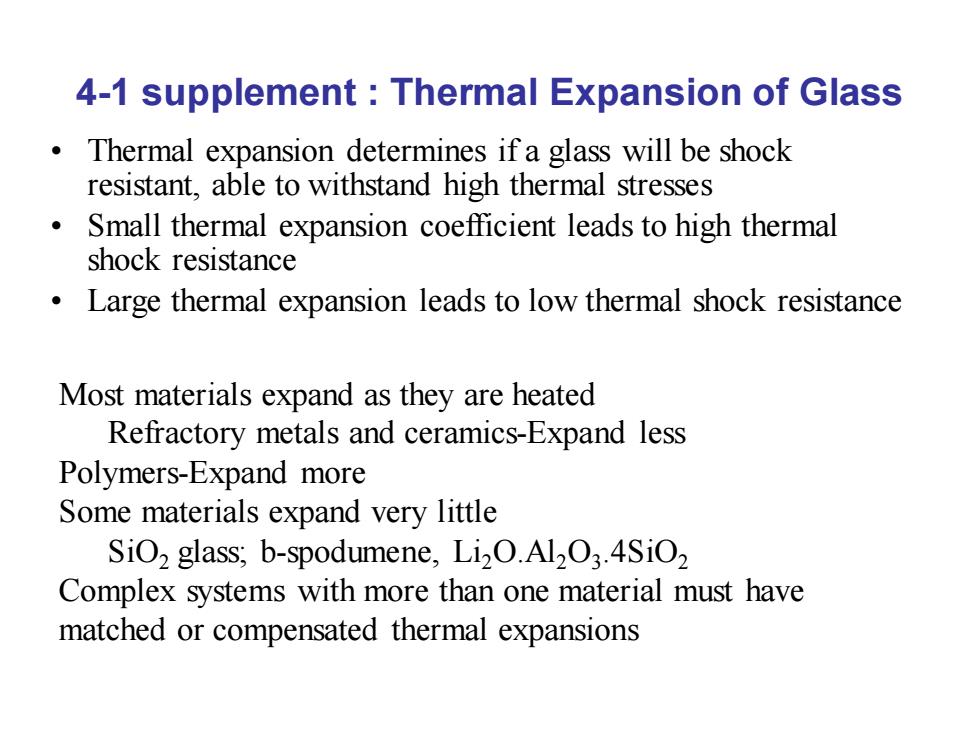
4-1 supplement Thermal Expansion of Glass Thermal expansion determines if a glass will be shock resistant,able to withstand high thermal stresses Small thermal expansion coefficient leads to high thermal shock resistance Large thermal expansion leads to low thermal shock resistance Most materials expand as they are heated Refractory metals and ceramics-Expand less Polymers-Expand more Some materials expand very little SiO2 glass;b-spodumene,Li2O.Al2O3.4SiO2 Complex systems with more than one material must have matched or compensated thermal expansions
4-1 supplement : Thermal Expansion of Glass • Thermal expansion determines if a glass will be shock resistant, able to withstand high thermal stresses • Small thermal expansion coefficient leads to high thermal shock resistance • Large thermal expansion leads to low thermal shock resistance Most materials expand as they are heated Refractory metals and ceramics-Expand less Polymers-Expand more Some materials expand very little SiO2 glass; b-spodumene, Li2O.Al2O3 .4SiO2 Complex systems with more than one material must have matched or compensated thermal expansions
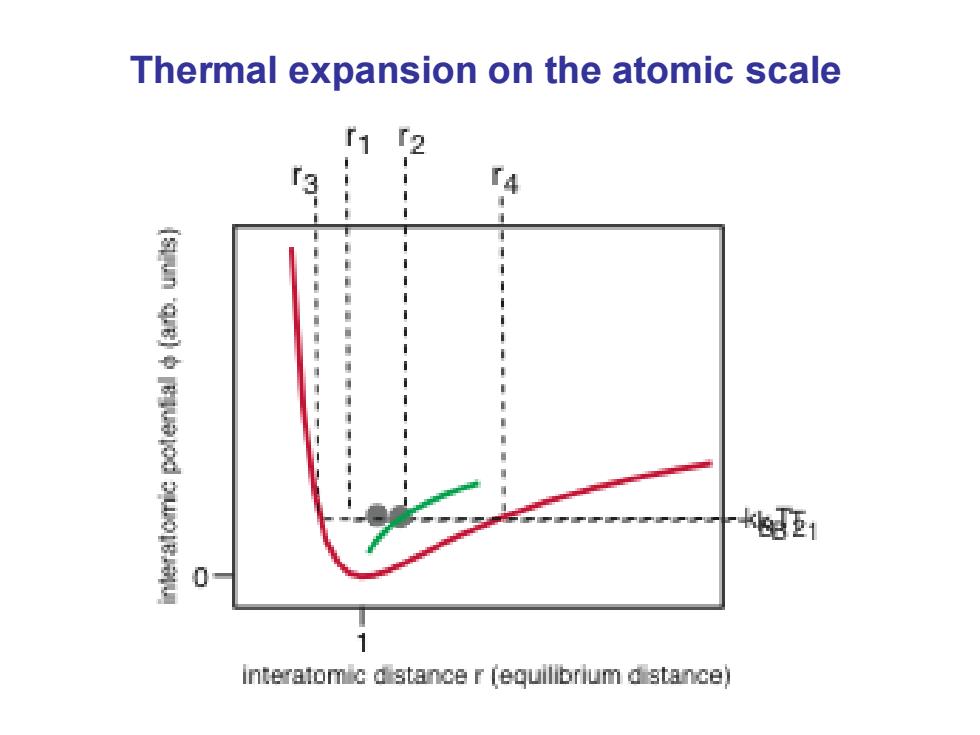
Thermal expansion on the atomic scale f1 更1 interatomic dstance r (equilibrium d stance)
Thermal expansion on the atomic scale
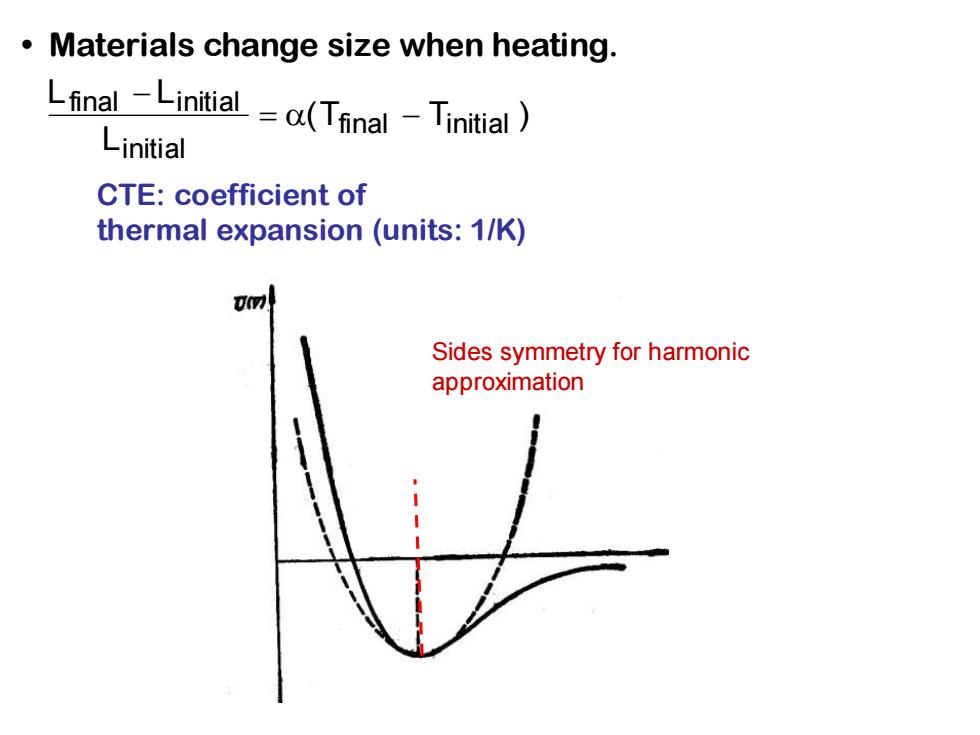
Materials change size when heating. Lfinal -Linitial =a(Tfinal-Tinitial Linitial CTE:coefficient of thermal expansion (units:1/K) Uov) Sides symmetry for harmonic approximation
• Materials change size when heating. Lfinal − Linitial Linitial = (Tfinal − Tinitial ) CTE: coefficient of thermal expansion (units: 1/K) Sides symmetry for harmonic approximation
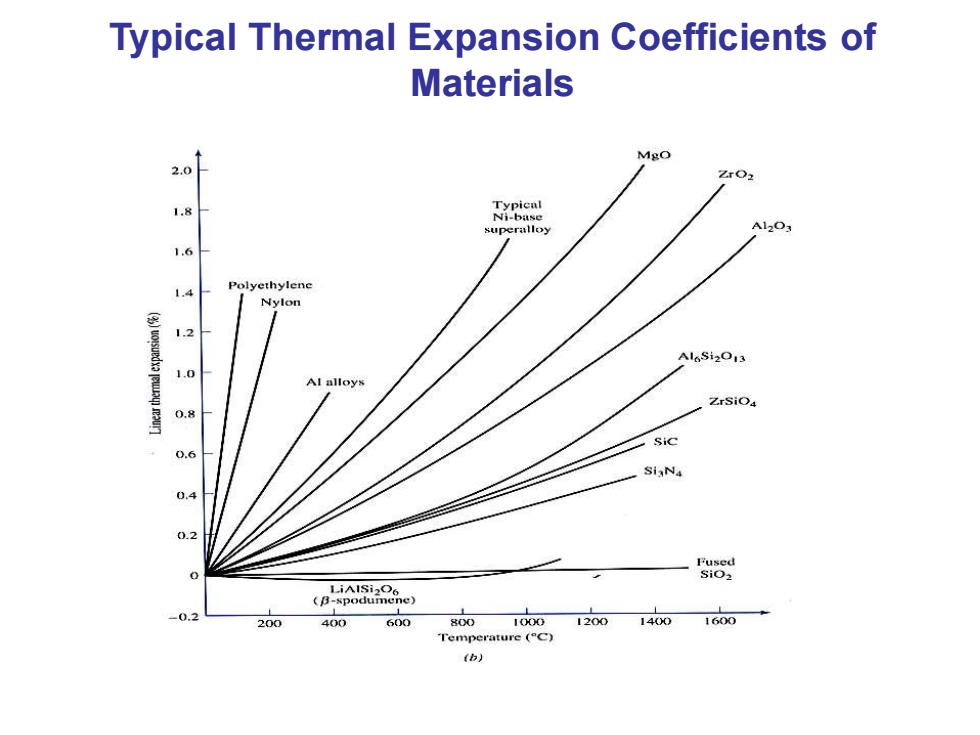
Typical Thermal Expansion Coefficients of Materials Mgo 20 1.8 Ni-base superalloy A12O3 1.6 1.4 Polyethylene Nylon (wotsuedxa eu 1.2 Al alloys ZrSiO 0.8 Sic 0.6 SiaNa 0.4 0.2 LiAlSi2O6 (B-spodumene) 0.2 200 400 600 800 1000 1200 1400 1600 Temperature (C) (b)
Typical Thermal Expansion Coefficients of Materials
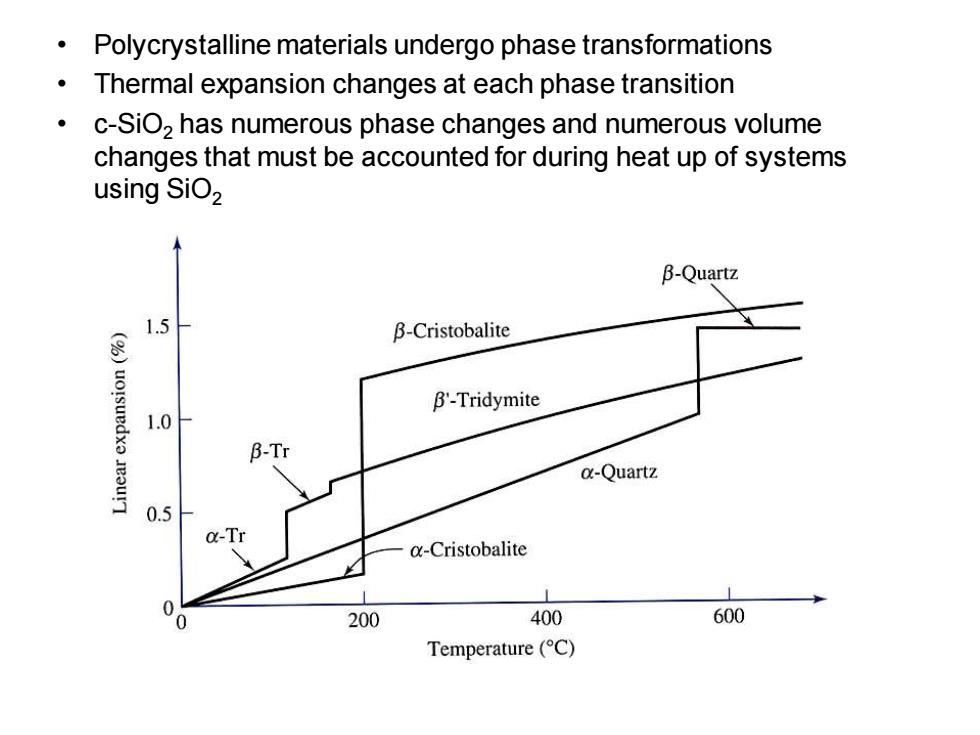
Polycrystalline materials undergo phase transformations Thermal expansion changes at each phase transition 。 c-SiO,has numerous phase changes and numerous volume changes that must be accounted for during heat up of systems using SiO2 B-Quartz 1.5 B-Cristobalite B'-Tridymite 1.0 B-Tr a-Quartz 0.5 a-Tr @-Cristobalite 0 200 400 600 Temperature (C)
• Polycrystalline materials undergo phase transformations • Thermal expansion changes at each phase transition • c-SiO2 has numerous phase changes and numerous volume changes that must be accounted for during heat up of systems using SiO2